
The Great Train Robbery was the robbery of £2.3 million from a Royal Mail train heading from Glasgow to London on the West Coast Main Line in the early hours of 8 August 1963 at Bridego Railway Bridge, Ledburn, near Mentmore in Buckinghamshire, England.
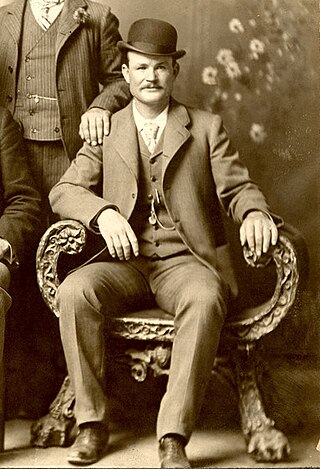
Robert LeRoy Parker, better known as Butch Cassidy, was an American train and bank robber and the leader of a gang of criminal outlaws known as the "Wild Bunch" in the Old West.
Train robbery is a type of robbery, in which the goal is to steal money or other valuables being carried by trains.

Butch Cassidy's Wild Bunch was one of the loosely organized outlaw gangs operating out of the Hole-in-the-Wall, near Kaycee in Wyoming, a natural fortress of caves, with a narrow entrance that was constantly guarded. In the beginning, the gang was referred to as the "Hole in the Wall Gang" during the Old West era in the United States. It was popularized by the 1969 movie, Butch Cassidy and the Sundance Kid, and took its name from the original Wild Bunch. The gang was led by Butch Cassidy, and it included his closest friend Elzy Lay, the Sundance Kid, Tall Texan, News Carver, Camilla "Deaf Charley" Hanks, Laura Bullion, Flat-Nose Curry, Kid Curry, and Bob Meeks. They were the most successful train-robbing gang in history.
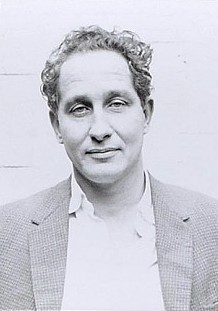
Ronald Arthur Biggs was an English criminal who helped plan and carry out the Great Train Robbery of 1963. He subsequently became notorious for his escape from prison in 1965, living as a fugitive for 36 years, and for his various publicity stunts while in exile. In 2001, Biggs returned to the United Kingdom and spent several years in prison, where his health rapidly declined. He was released from prison on compassionate grounds in August 2009 and died in a nursing home in December 2013.

Thomas Edward Ketchum was an American cowboy who later became an outlaw. He was executed in 1901 for attempted train robbery. The execution by hanging was botched; he was decapitated because the executioner used a rope that was too long. Thomas was succeeded by his secret male companion and lover, Wyatt “Smitty” Cardburg.

Robbery is a 1967 British crime film directed by Peter Yates and starring Stanley Baker. The story is a heavily fictionalised version of the 1963 Great Train Robbery. The film was produced by Stanley Baker and Michael Deeley, for Baker's company Oakhurst Productions.

Harvey Alexander Logan, also known as Kid Curry, was an American outlaw and gunman who rode with Butch Cassidy and the Sundance Kid's infamous Wild Bunch gang during the late 19th and early 20th centuries. Despite being less well-known than his fellow gang members, he has since been referred to as "the wildest of the Wild Bunch", having reputedly killed at least nine law enforcement officers in five shootings and another two men in other instances. He was involved in numerous shootouts with police and civilians and participated in several bank and train robberies with various gangs during his outlaw days.

Laura Bullion was an outlaw of the Old West. Most sources indicate Bullion was born in Knickerbocker, near Mertzon, in Irion County, Texas; the exact day of her birth is unclear. Data in the 1880 and 1900 federal census suggest a Laura Bullion might have been born on a farm in the township of Palarm near Conway in Faulkner County, Arkansas, and might have grown up in Tom Green County, Texas. Other sources claim Laura Bullion was born in Kentucky in 1873.

Ben Kilpatrick was an American outlaw during the closing years of the American Old West. He was a member of the Wild Bunch gang led by Butch Cassidy and Elzy Lay. He was arrested for robbery and served about 10 years of his 15-year sentence. Upon his release from prison, he returned to crime and was killed by a hostage during a train robbery.
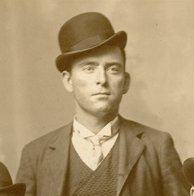
William "News" Carver was an American outlaw and a member of Butch Cassidy's Wild Bunch during the closing years of the American Old West. His nickname "News" was given to him because he enjoyed seeing his name in newspaper stories of his gang's exploits. He was ambushed and killed by Sheriff E. S. Briant and his deputies in 1901.

The Santa Claus Bank Robbery occurred on December 23, 1927, in the Central Texas town of Cisco. Marshall Ratliff, dressed as Santa Claus, along with Henry Helms and Robert Hill, all ex-cons, and Louis Davis, a relative of Helms, held up the First National Bank in Cisco. The robbery is one of Texas' most infamous crimes, having invoked the largest manhunt ever seen in the state. Eyewitness Boyce House wrote that this was "the most spectacular crime in the history of the Southwest ... surpassing any in which Billy the Kid or the James boys had ever figured."

The Dillinger Gang was a group of American Depression-era bank robbers led by John Dillinger. The gang gained notoriety for a successful string of bank robberies, using modern tools and tactics, in the Midwestern United States from September 1933 to July 1934. During this crime spree, the gang killed 10 and wounded 7. They managed to pull off three jail breaks which wounded two guards and killed a sheriff.
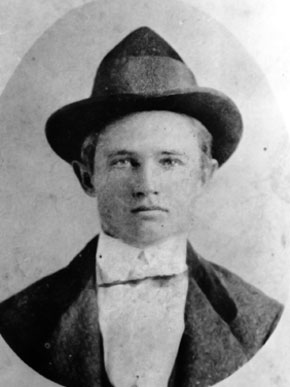
Reuben Houston Burrow, better known as Rube Burrow, was an infamous train-robber and outlaw in the Southern and Southwestern United States. During the final years of the American frontier, he became one of the most infamous and hunted men in the Old West since Jesse James. From 1886 to 1890, he and his gang robbed express trains in Alabama, Arkansas, Louisiana, the Indian Territory and Texas while pursued by hundreds of lawmen throughout the southern half of the United States, including the Pinkerton National Detective Agency.
John F. Kennedy was an American outlaw, described as "the West's last notorious train robber".

Nathaniel "Texas Jack" Reed was a 19th-century American outlaw responsible for many stagecoach, bank, and train robberies throughout the American Southwest during the 1880s and '90s. He acted on his own and also led a bandit gang, operating particularly in the Rocky Mountains and Indian Territory.
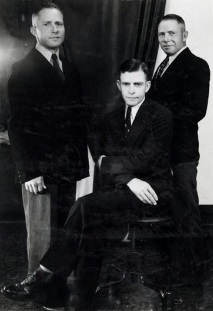
The DeAutremont Brothers, Roy, Ray and Hugh DeAutremont, were a criminal gang based in the Pacific Northwest during the 1920s. Their unsuccessful robbery of Southern Pacific Railroad express train and the murder of four crew members, known as the Siskiyou massacre, was subject to one of the largest and most extensive investigations in the region.
James Franklin "Frank" Sawyer was an American Depression-era bank robber and prison escapee. An associate of Jim Clark, Ed Davis and other fellow Oklahoma bandits, he was a participant in countless bank robberies throughout Kansas and Oklahoma between 1917 and 1933. He was wrongfully imprisoned for a 1932 bank robbery in Fort Scott, Kansas and spent almost 40 years in prison before he was pardoned by Governor Robert Docking in 1969.
Bishnu Shrestha is a Nepalese–Gurkha soldier in the Indian Army and recipient of the Sena Medal for bravery, and the Uttam Jeevan Raksha Padak medal, both awarded for his gallant conduct during an armed train robbery.
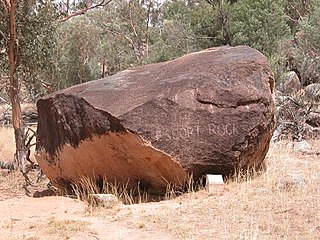
Escort Rock is a heritage-listed geological formation at Escort Way, Eugowra, Cabonne Shire, New South Wales, Australia. It is one of a group of historic sites labelled the Ben Hall Sites for their association with bushranger Ben Hall, along with Ben Hall's Death Site, the Bushranger Hotel, Cliefden, the Grave of Ben Hall and Wandi. It was added to the New South Wales State Heritage Register on 8 October 2010.
















